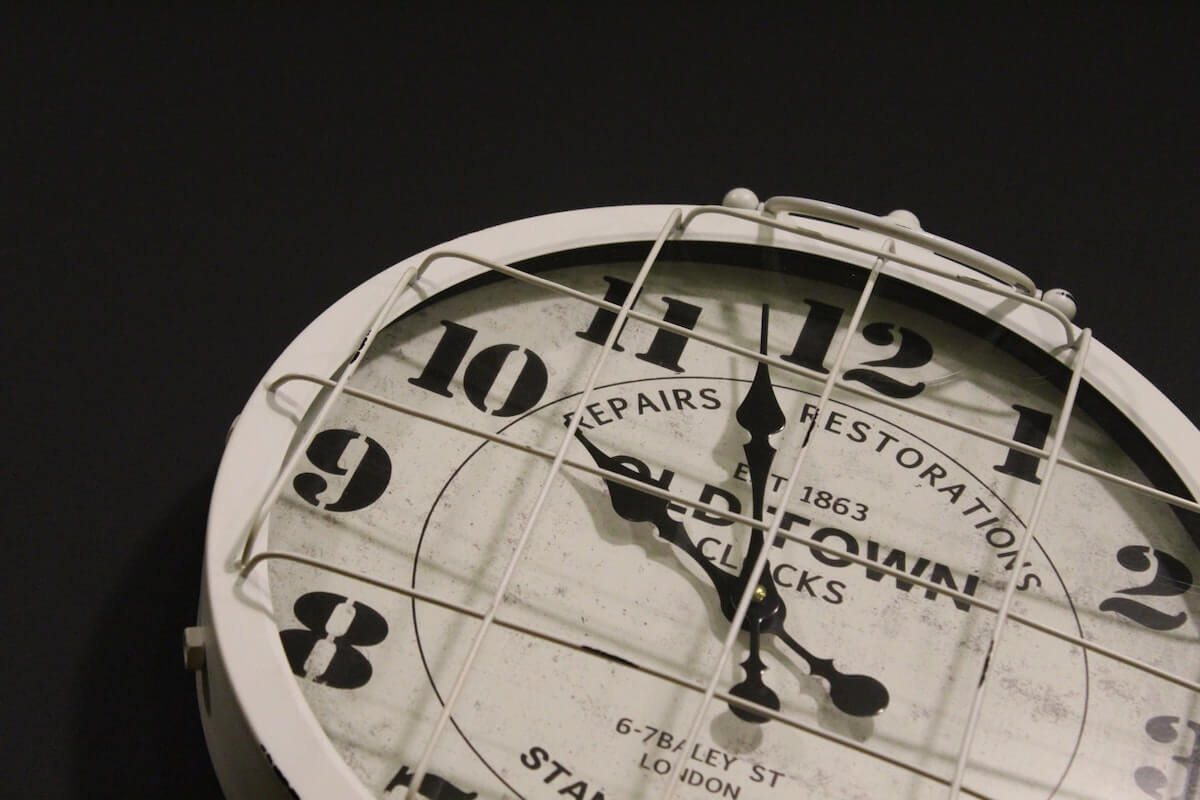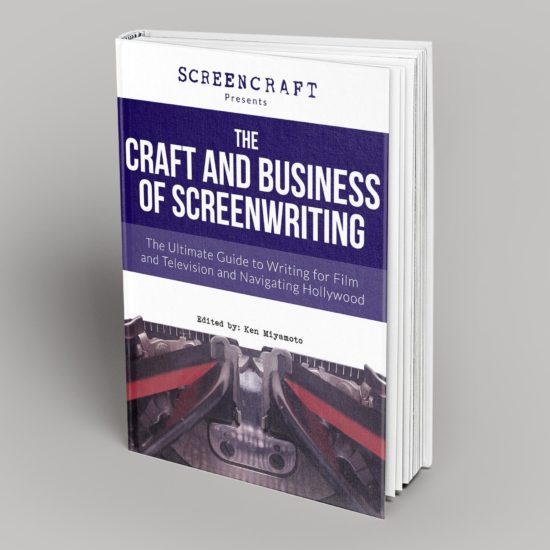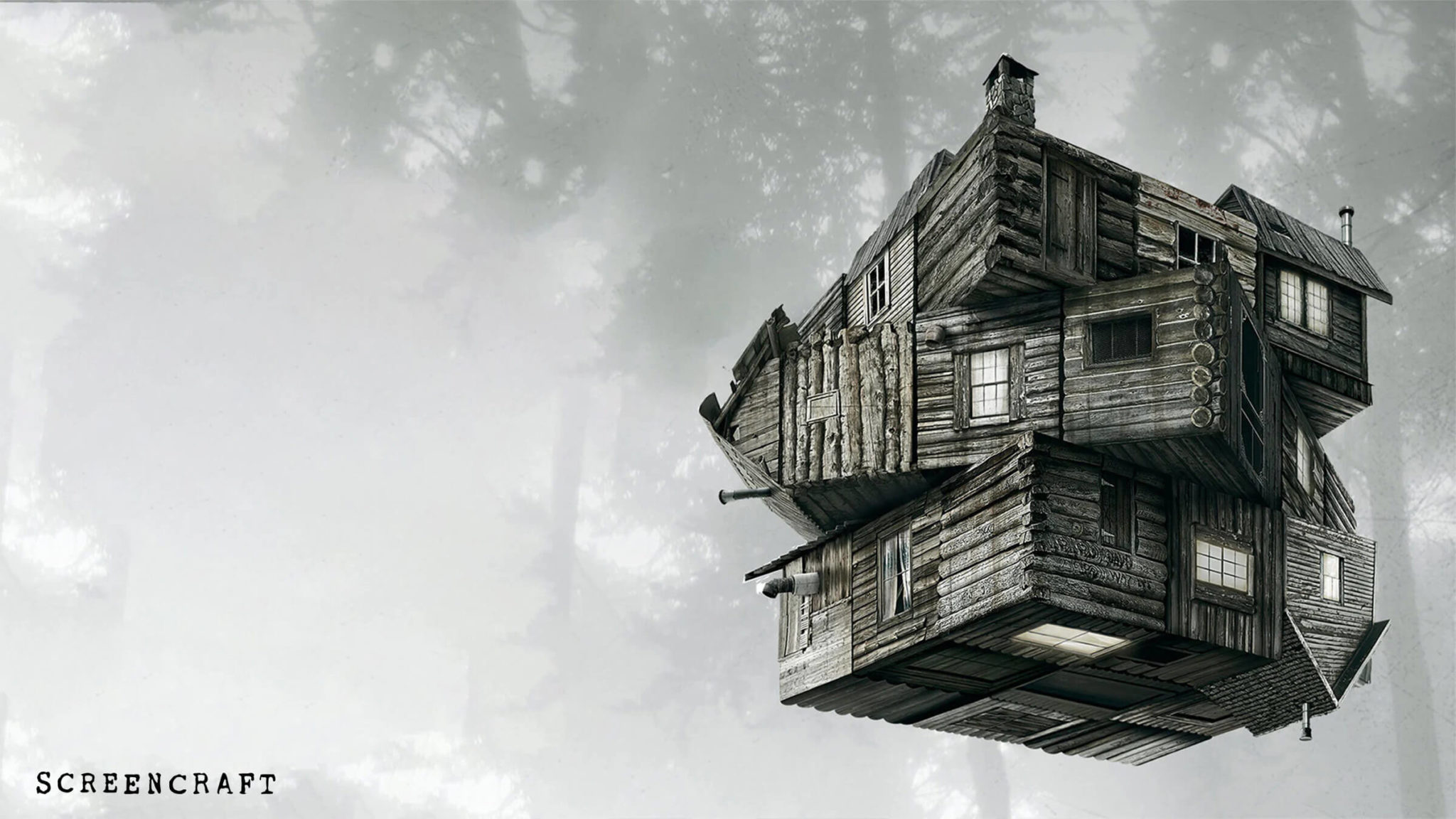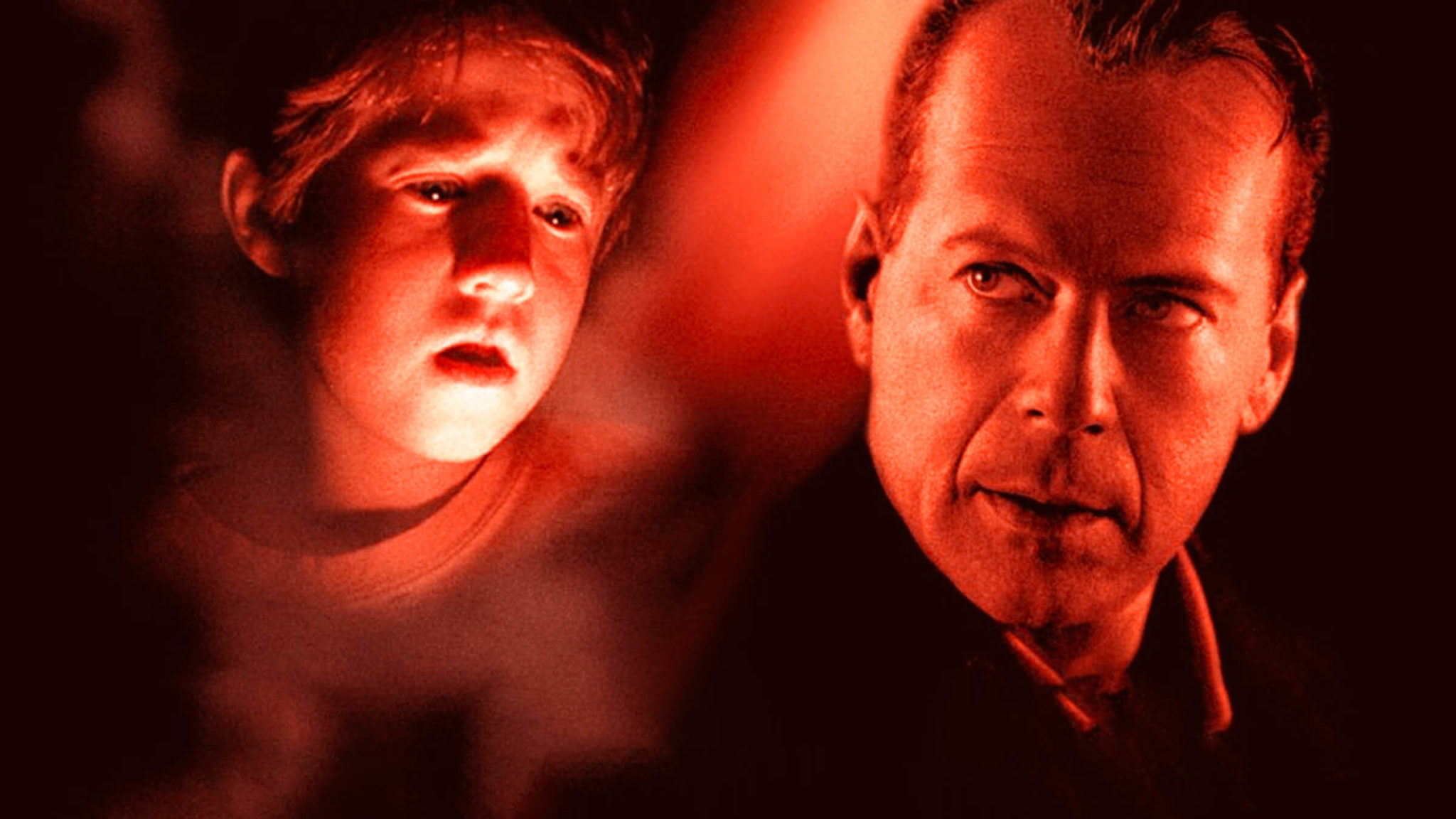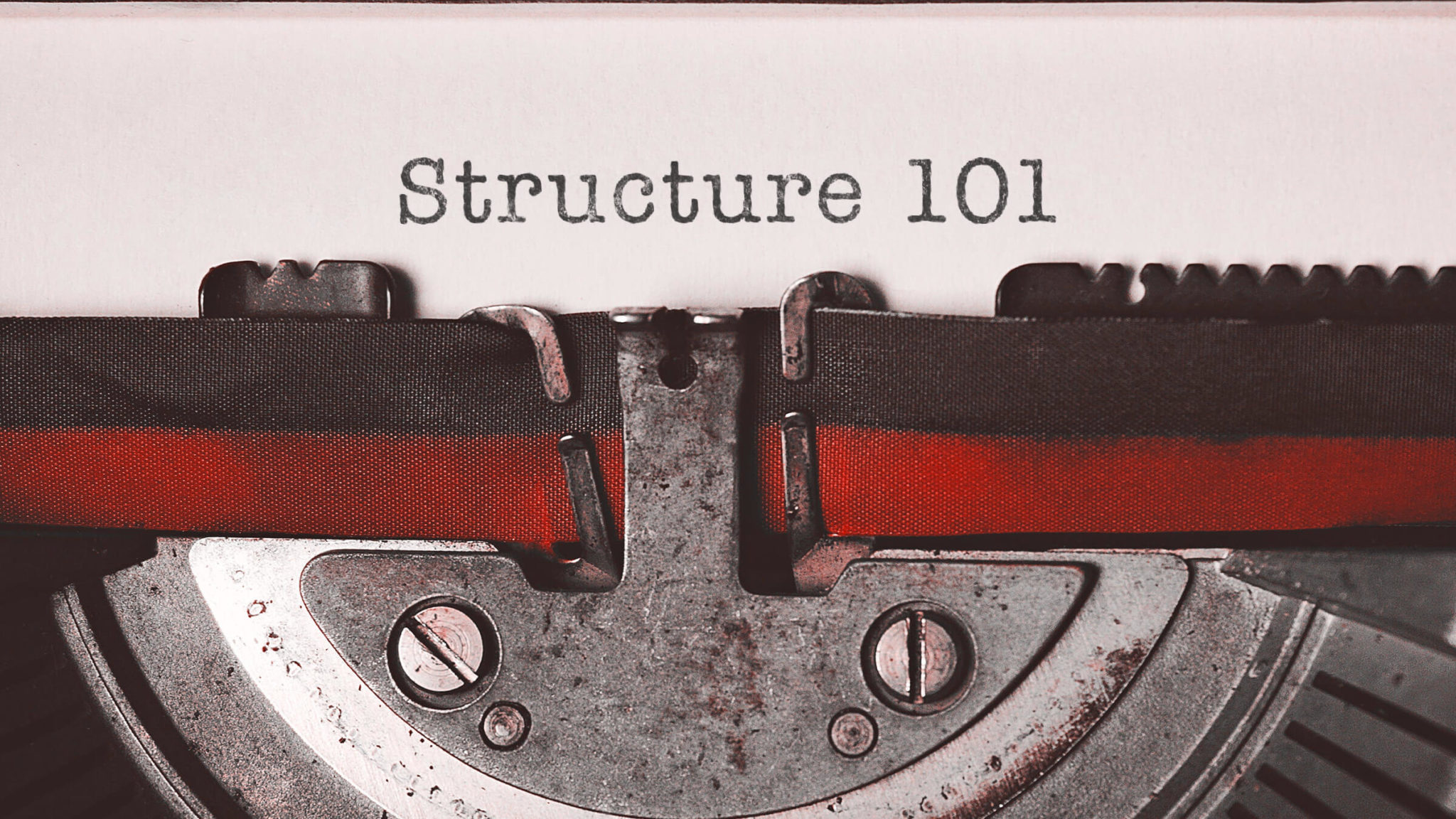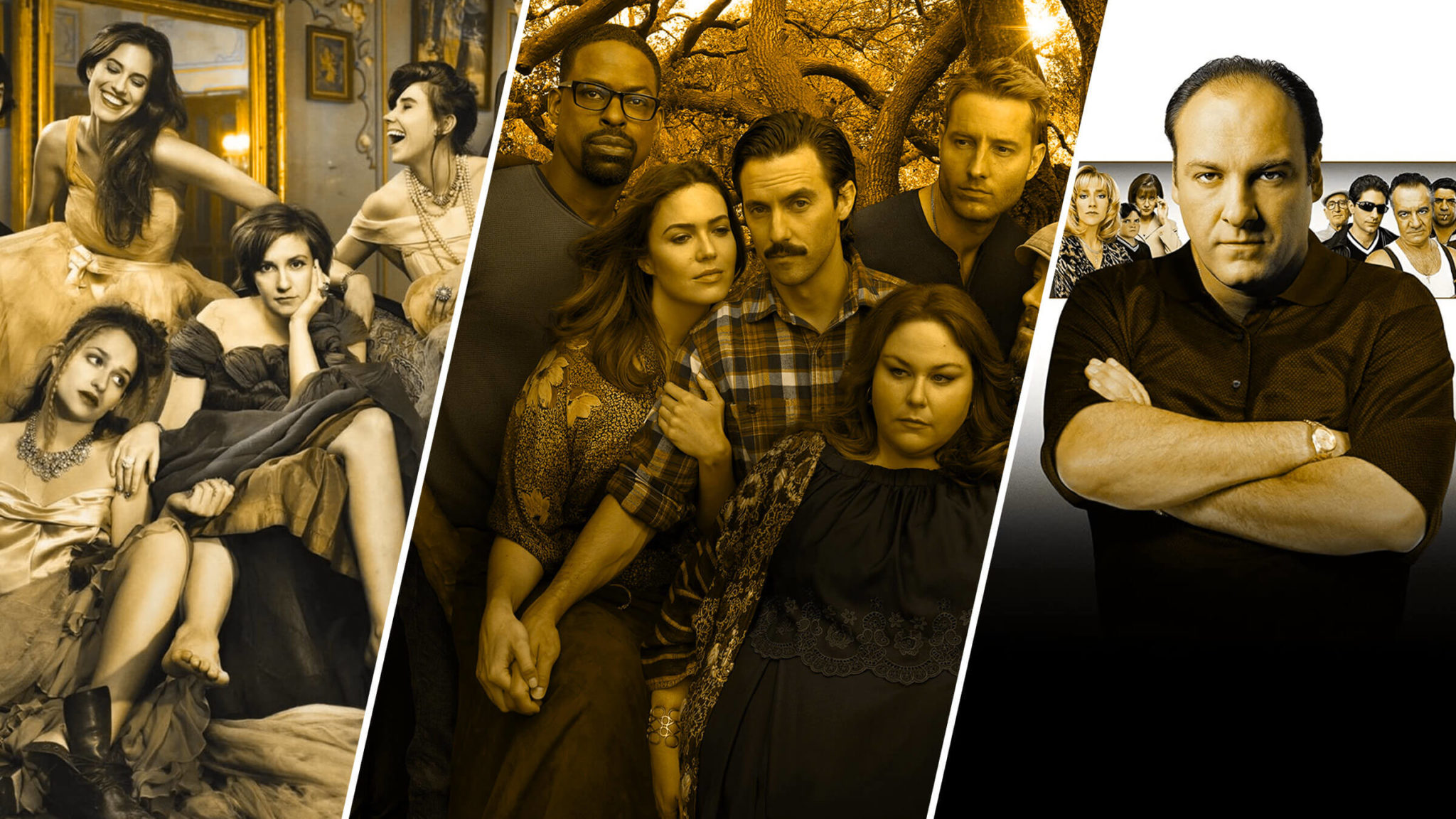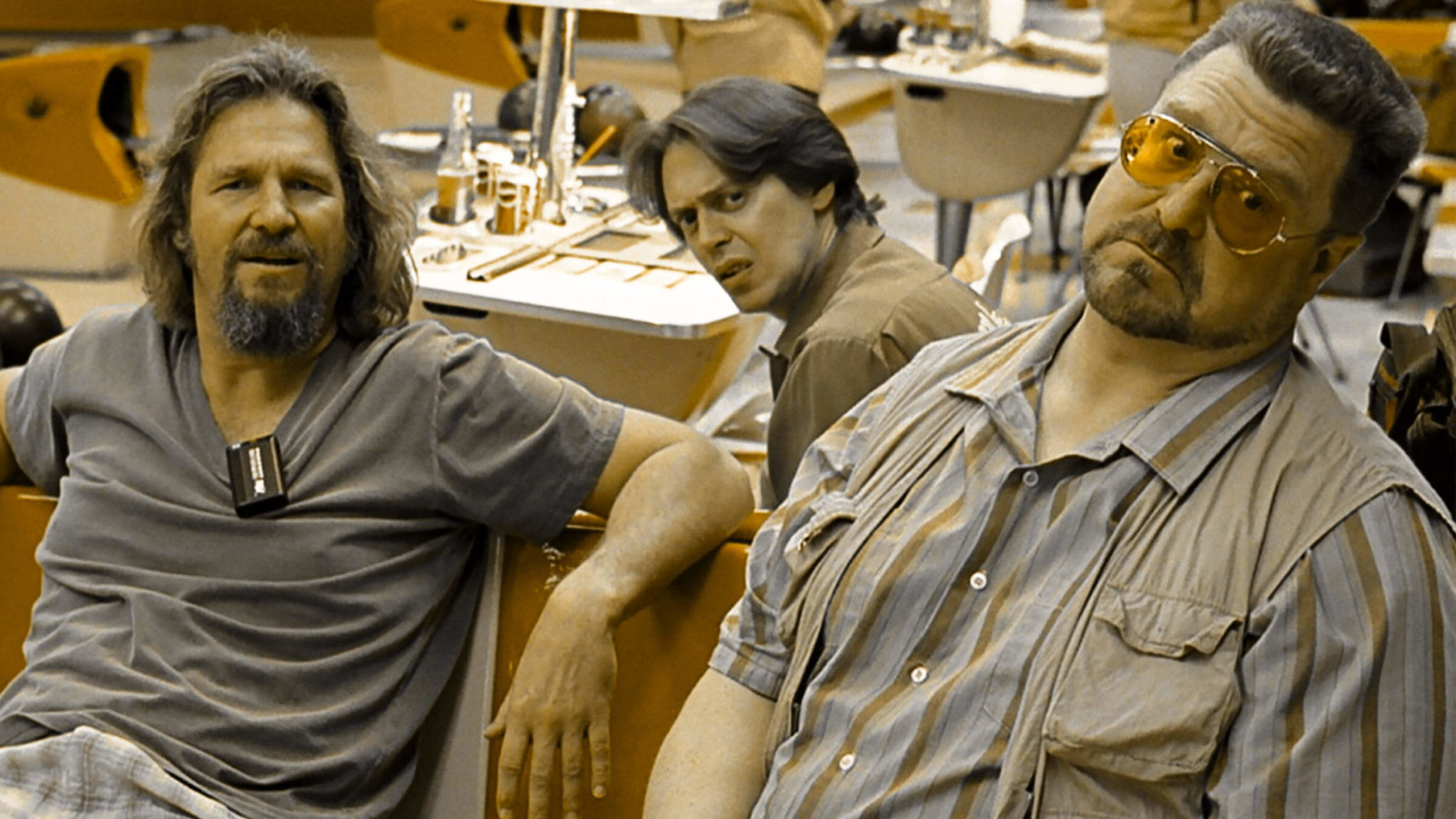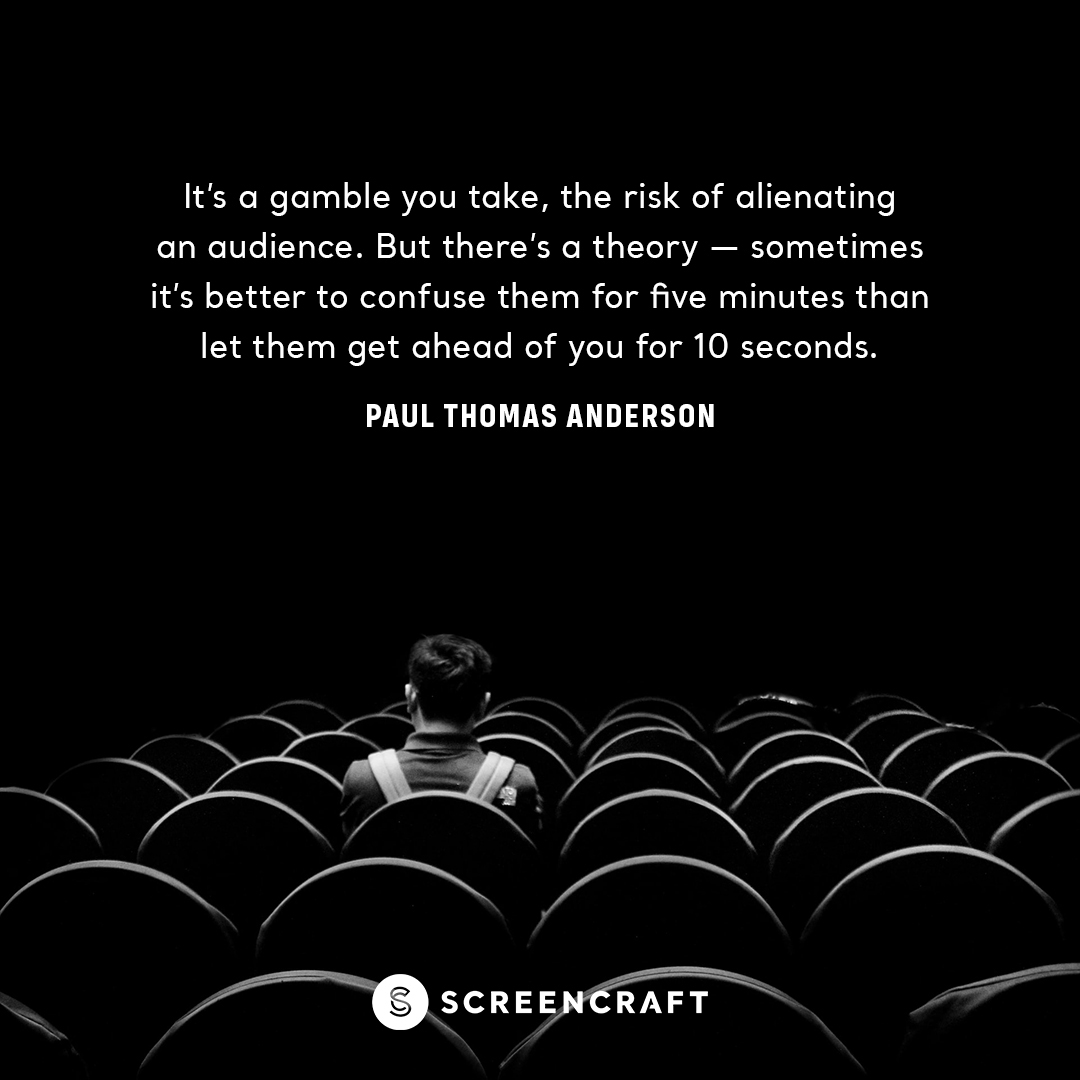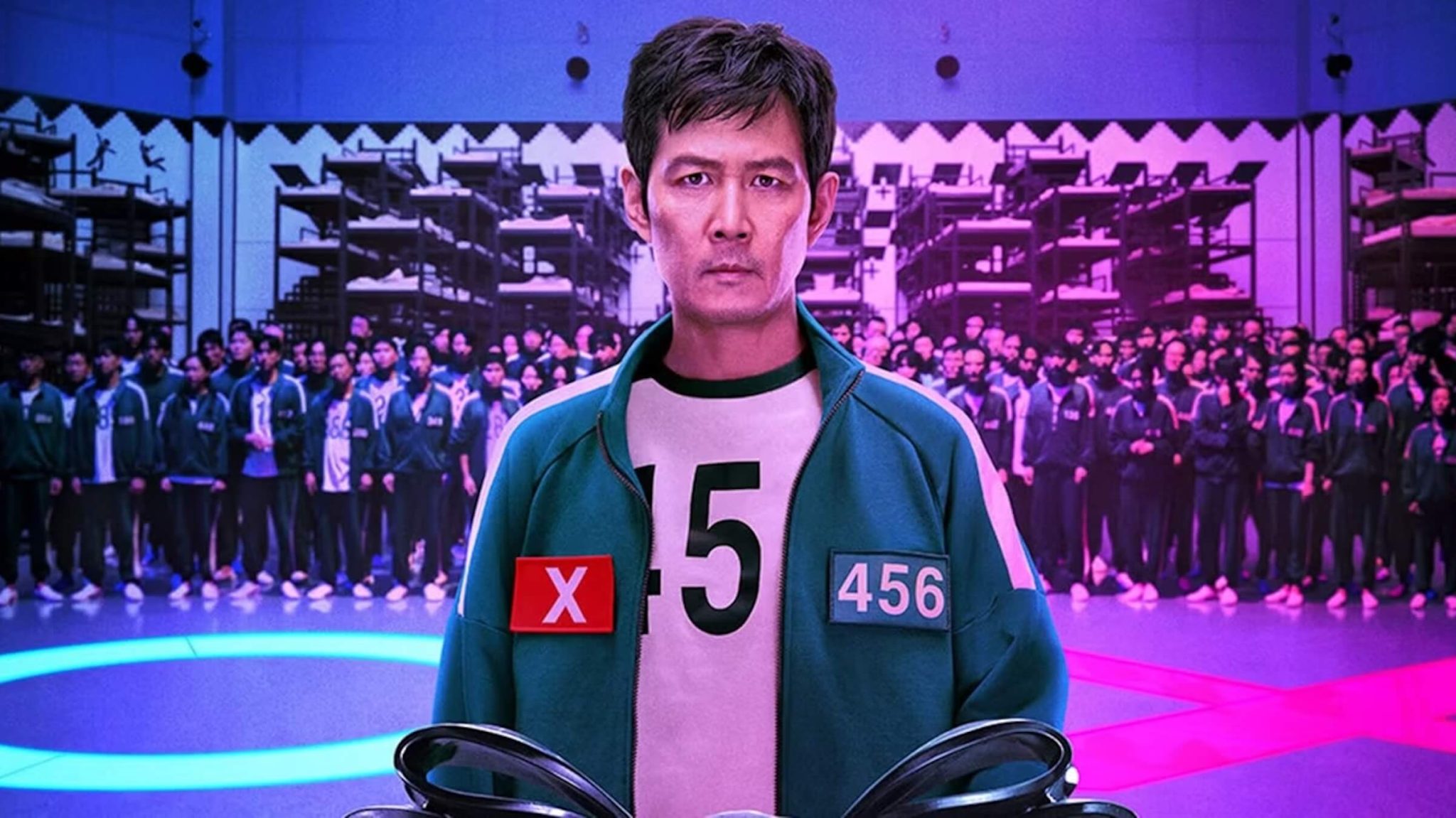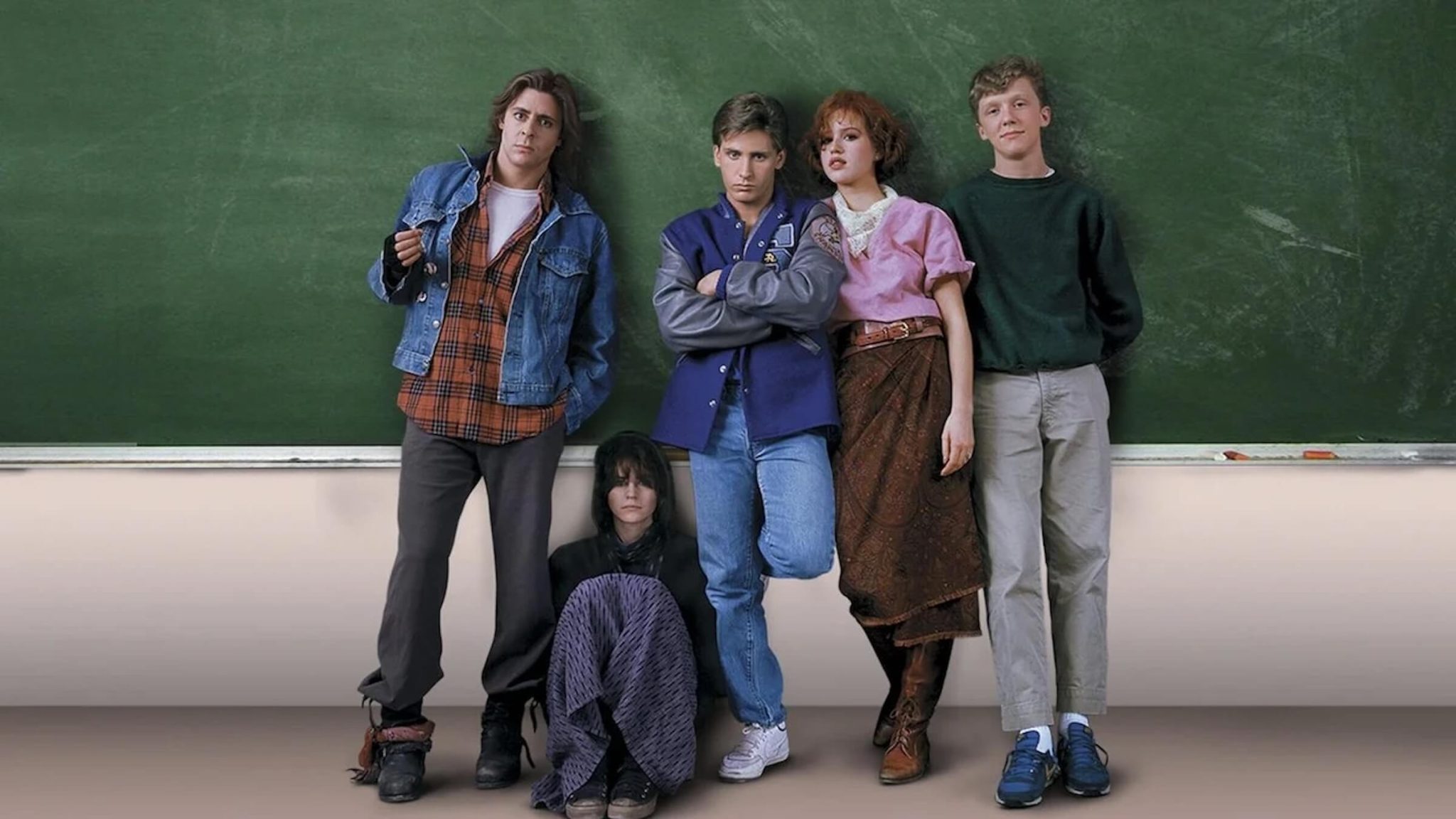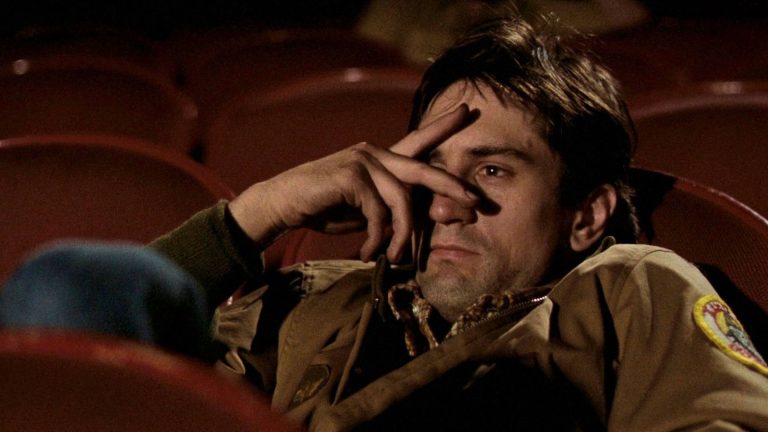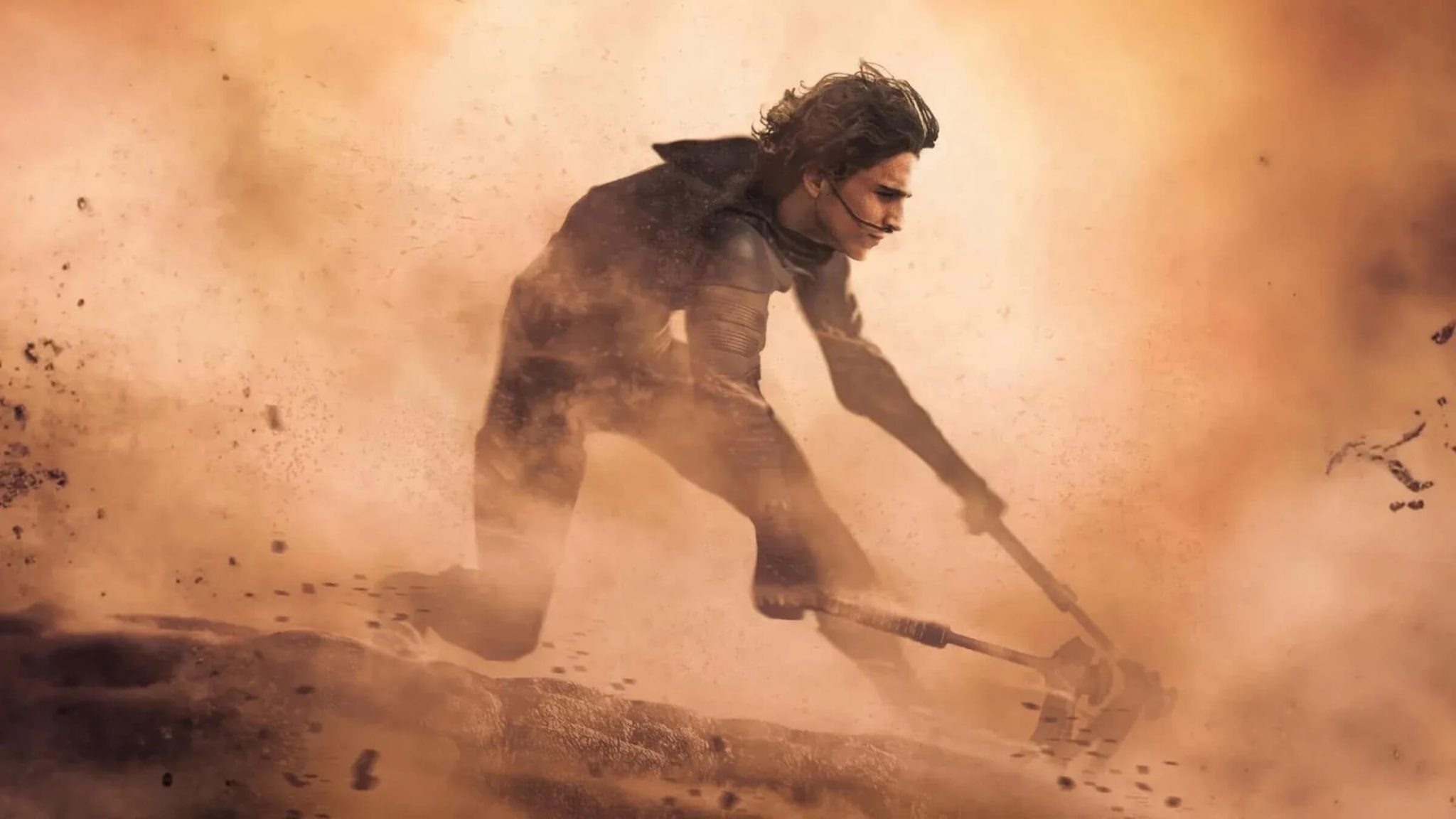How to Handle Time Travel in Your Screenplay
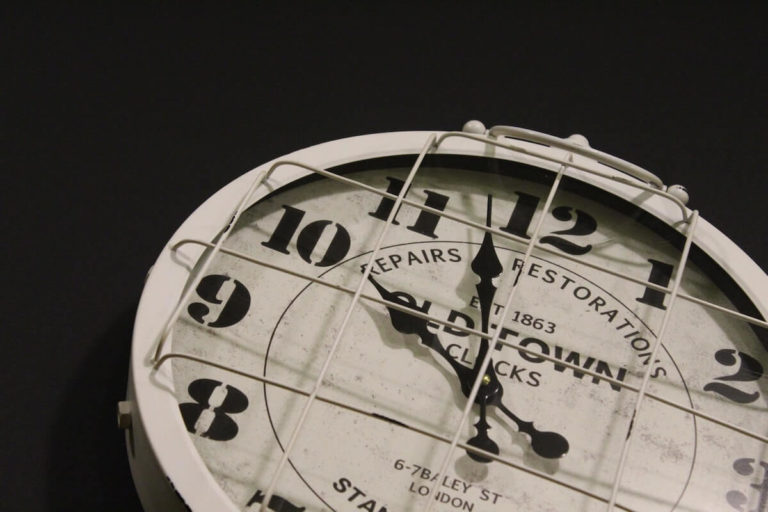
Whether your characters are defying the laws of nature or just reflecting on the past, there are plenty of ways for a screenwriter to navigate the wormholes of time.
Possibly because time is something that humans can't control, it continually captures our curiosity and inspires us to take a quantum leap into the unknown of our imaginations. Many works of fiction deal with our fascination with time, from Rip Van Winkle to A Christmas Carol to Hot Tub Time Machine.
We can’t stop or reverse time. We just continually push forward into the boundless future. So, it is no coincidence that the first time machine was a clock, because that is how we measure our sojourn around the sun. It is our attempt to master the elusive master of us all, our own mortality.
How can a writer simultaneously access the past, capture the present, and look to the future within their text? And more importantly, how can we do this within the confines of screenplay formatting and structure?
Have a screenplay with time travel elements? Submit to our Sci-Fi & Fantasy Competition!

Accessing the Past
A good starting point on our journey through time is to look at how some extremely talented writers have made the past accessible to their characters and readers alike.
First, let’s look at Season 3 of True Detective. We have only gotten a few glimpses of the scripts from creator Nic Pizzolatto’s Instagram account, but we can gather a lot from those snippets — especially if we hold them up to past seasons.
In this scene, 2015 Detective Wayne Hays is an old man suffering from dementia. Throughout the series, two different timelines of the past interweave through his fragmented mind as he tries to finally solve the case. As with any good mystery, bits and pieces are revealed through his warped memories, revealing the larger picture that he doesn’t always have access to.
Here, Wayne is working on the case in his office late at night, when suddenly his late wife is sitting in the chair behind him — taunting him. Pizzolatto addresses her character name and year in italics: 1990 Amelia. He also includes a parenthetical to indicate that this is going on in Wayne’s head. We see his children from this same time period running in the hallway. Phantoms of his mind.
Pizzolatto labels the characters with the year when blending the past with the present, but not when the year is already addressed in the heading like this:
EXT. 1980 WOODARD HOUSE - EVENING
Clearly labeling each time period helps the reader make that jump smoothly.
Wayne is an unreliable narrator so we can’t take everything he remembers at face value, which leads us to question what is real and what is just the by-product of a fragile mind. Pizzolatto does a remarkable job of having the past and present speak to each other. One cannot exist without the other and every storyline works together to progress the story. There are times when 2015 Wayne revisits old haunts and 1990 Wayne can sense him there watching.
One of the ways in which Pizzolatto differentiates between time periods is through details such as hair, clothing, and locations. By introducing each time period with these details, a writer can leave them out of the description going forward and focus on more important things, a simple 1990 in the heading or 1990 Wayne suffices for all of the departments to know which timeline to prepare for.
A common motif throughout the series occurs when characters revisit landmarks from the past and we see how time has changed the place. From life to ruin. Hays and Roland even comment on it.
“Something, isn’t it? How quick this town died?”
“It didn’t die. It got murdered.”
Contemporary films and television shows don’t necessarily notify the viewer when there is a shift in time. It’s usually clear on the page because it is labeled as such. Yet the use of lower thirds or a SUPER: to indicate a shift in time or location is becoming increasingly rare. You can also use FLASHBACK in the scene heading for singular events. You can use these techniques, visual cues like in True Detective, or be more discreet like Greta Gerwig’s Little Women.
True Detective takes place over the course of nearly three decades, so it’s easier to discern between time periods with different wardrobes, props, and settings. Whereas Little Women’s story is contained in two timelines taking place seven years apart. It’s a little less clear. In the script, Gerwig makes an interesting formatting choice and decides to use red text to signify the past. This is anything but discreet, and her choice has raised a lot of questions about the liberties a screenwriter can take in regards to formatting.
Should aspiring screenwriters be afraid to break the norms of formatting and structure? If it’s clean, easily readable, and conveys the information clearly — readers love seeing something unique that stands out above the average script that crosses their inboxes.
When you break from the conventions of typical screenplay formatting, it’s sometimes good to make note of it between the title page and the first page of your script like Greta Gerwig did for Little Women. She explains the use of slashes as the interruption point in overlapping/dual dialogue, the red text signifying the past, and that both storylines move forward linearly from their origin points.
The only real criticism the film has received is concerning its nonlinear storytelling, but an active viewer should be able to settle in by noticing clear indicators that signify which timeline we are occupying, even if at some moments they seem to blend together.
Gerwig not only makes use of the two different narratives as a grounding point for the reader/viewer, but she also makes use of locations and visual styles as indicators. Visual styles, aside from brief descriptions when introducing a setting, are really left up to the director. Keep in mind, Gerwig has plenty of artistic ownership over the script considering that she is also the director of the film.
In the film, specific locations signify certain time periods. New York and Paris are in the present. Concord is both in the past and present, but the tone for each time period is presented differently. In the past (and memory) Concord is full of life and viewed in an almost nostalgic golden hour, whereas the present is somewhat empty, cold, and daunting.
The date in the heading or character name is important for the reader, and visual cues are important for the viewer. Pay attention to both when looking in the rearview.
Living in the Past
The pilot for Outlander does a great job of setting up Claire’s slip into the past. She’s a former nurse in the Second World War, and her husband Frank is a former intelligence officer who has received a job teaching at a prestigious university. After the war, they visit Scotland in an attempt to rekindle their flame. Frank explains key facts while sightseeing that will help Claire later in the episode, as well as introducing the main antagonist of the first two seasons, his notorious ancestor Captain “Black Jack” Randall.
Frank points out a rock bluff that was used by British forces to ambush the Scottish, and she later recognizes the landmark and uses that knowledge to thwart an ambush. Frank also mentions the victor of a major battle that becomes the climax point of the season. They visit castles that will become her temporary homes. Flashback scenes of their life before the war are written entirely in italics.
It seems as though we’re watching casual conversations between husband and wife, when in fact writer Ronald D. Moore is foreshadowing future events with each line. In a way, nearly every conversation acts as a Chekhov’s Gun.
Also, her profession makes her a rarity in her new reality and she seems to fit in like a missing puzzle piece despite standing out like a giraffe in a haystack. As her love for Scottish beau Jaime develops, we’re left to question whether they can change history based on the information Claire holds.
When Claire ultimately slips through the stones and falls into the past, it isn’t explicitly stated in the script. There is no date dropped in the heading. Instead, the reader learns as Claire learns —through details. There are the 18th century British Army redcoats, kilts, horses, muskets. We come to accept that Claire is in the past as she does. At this point, a writer’s best weapon is their research of the era. When you think you’re done researching, do some more. Little interconnected details go a long way in world-building and there is inspiration waiting in every chapter of history.
These little details ultimately make the time traveler fall in love with the past and never want to leave it — but seldom does a time traveler get to stay within this romantic notion of the past for very long. Often when a time traveler falls into the past by accident, their main objective is to get back to the future.
Hunting the Past
It’s happened to us all. We’re going about our normal daily errands when a police officer approaches us with a polaroid of John Connor and asks, “Have you seen this boy?”
Oh no, an agent from the future has been sent back in time with the task of assassinating the future leader of humankind’s last resistance. Not again. The granddaddy of the time travel hunter flick is Terminator. James Cameron made heads spin with the tale of a cyborg assassin sent into the past in order to change the future. This franchise is also a cautionary tale of what happens when time travel slips into a black hole of confusion. A simple time travel premise increases believability. The more convoluted you make the time travel, the harder it is to retain an audience.
Looper was a fun take on this trope. Even the title serves a function. The mob tasks an assassin with a mark from the future. Himself. We’ll speak more about loops and paradoxes below.
Observing the Past or Future
The most classic tales of time travel are that of the observer — a main character that visits different time periods but can’t change anything. They’re simply observers visiting in order to learn a lesson and either correct their character flaws or gain information.
In A Wonderful Life, George is fed up and tries to commit suicide. His guardian angel saves him and shows him what life would be like if he didn’t exist. The world would be absolutely horrible and George is taught the value of counting his blessings even if he has to set up a Go Fund Me.
Ebenezer Scrooge is taken on a fantastic voyage by the Ghosts of Christmas Past, Present, and Yet to Come in A Christmas Carol. He learns that his greed and stinginess make everyone miserable and maybe he should not do that anymore. Instead of being a blemish on the world, he decides to spread cheer to the world. A win for lil’ Tiny Tim.
More recently, Game of Thrones introduced us to the Three-Eyed Raven and his abilities as a warg. Much like True Detective, Bran is able to call out to his father while in a vision to the past and his father turns to the sound, unable to see his son.
The observer takes on an almost ephemeral presence and usually depicts the character in a paranormal or psychic state.
Changing the Past or Future
Okay, it’s time we talk about temporal paradox. The two main paradoxes are the grandfather paradox and the stable time loop. Put on your hard hats, girls and boys.
Grandfather Paradox
This is based on the question, “What would happen if you went back in time and killed your grandfather before your father was born?”
Let’s look at Back to the Future for this one. Marty McFly travels back in time to when his parents were in high school and they are his peers. In a weird twist of fate, his mother begins to fall in love with him instead of his father. Marty’s siblings in the McFly family photo begin to fade and he realizes that if he doesn’t get his mother to fall in love with the luckless George McFly, he’s doomed. He would fall victim to the Grandfather Paradox. He wouldn’t exist.
But, he prevails and his mother falls in love with George, and having saved his family, he can return to the future by creating a…
Stable Time Loop or Causal Loop
Which came first, the chicken or the egg? A Causal Loop occurs when a sequence of factors causes an event, which in turn becomes the cause of the initial event. Say you go back in time to stop an assassination — but your attempt to stop it actually causes it. This creates a stable loop of causation. Nobody knows whether the egg or the chicken came first. We can theorize. Either way, one concept can’t exist without the other.
Stuck in a Loop
A character relives the same day or experience over and over until the character changes their fate by breaking the loop. This usually involves the character realizing and correcting their flaws.
Groundhog Day is a great example of the reset button trope which has had a revival of popularity in recent years with the romantic comedy When We First Met and horror film Happy Death Day.
Perhaps the best example of a looping narrative is Lola Rentt (Run Lola Run). Lola gets a call from her boyfriend Manni, who misplaces 100,000 Deutsche Marks on a train. His boss gives him twenty minutes to come up with the money or else. Lola rushes out of her apartment and is met with a series of obstacles. Each obstacle delays her, ultimately creating a butterfly effect of events that lead to her death.
The action restarts when she hangs up the phone and she races through the obstacles again. Even the smallest change in Lola’s course causes the outcome to be completely different. The action restarts a third time and she hits the path with precision, leading to a happy ending. It’s a humbling reminder that the smallest of actions can have huge ripple effects.
Alternate Timelines and Alternate Universes
Sometimes when a character returns to the past, they splinter the timelines and create alternate planes of existence. This is showcased well in CW’s The Flash. Barry Allen is able to travel through time, and by doing so he creates different timelines — realities that exist from the splintering point.
If we open our minds to the possibility of alternate timelines, then we also must consider alternate universes. We gain access to alternate Earths through portals that cut through space and time. This allows the writers to use the same actors and alternate the characters’ personalities, powers, and costumes. This gives the writers of that room a lot of creative space to introduce new versions of the same characters.
Form & Function
Time is the most essential function of any story. When and where does each scene take place? Why? Every great film boils down to how the writer controls and shapes the time they are given. It is compounding a historical figure’s entire life into a ninety-page biopic. It’s a season of The All-American Girls Professional Baseball League in two hours and eight minutes.
It is the function that propels humans forward from birth. It is our beginning, middle, and end.
The only limit to how we portray time in our prose depends on our understanding of it. As writers, we are often burdened by not having enough time to write everything our heart desires.
What will your time produce?
 Kevin Nelson is a writer and director based in New York City, baby. He has written and produced critically acclaimed short films and music videos with incredibly talented artists, worked with anti-human trafficking organizations, and would rather be in nature right now. See more madness on Instagram or follow his work on https://www.kevinpatricknelson.com
Kevin Nelson is a writer and director based in New York City, baby. He has written and produced critically acclaimed short films and music videos with incredibly talented artists, worked with anti-human trafficking organizations, and would rather be in nature right now. See more madness on Instagram or follow his work on https://www.kevinpatricknelson.comFor all the latest ScreenCraft news and updates, follow us on Twitter, Facebook, and Instagram.
Tags
Get Our Screenwriting Newsletter!
Get weekly writing inspiration delivered to your inbox - including industry news, popular articles, and more!


